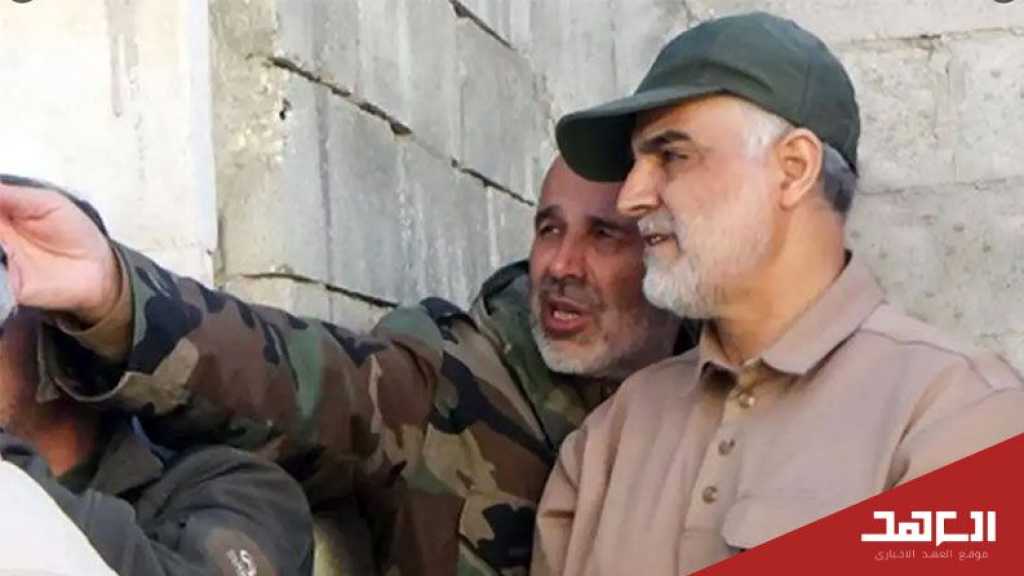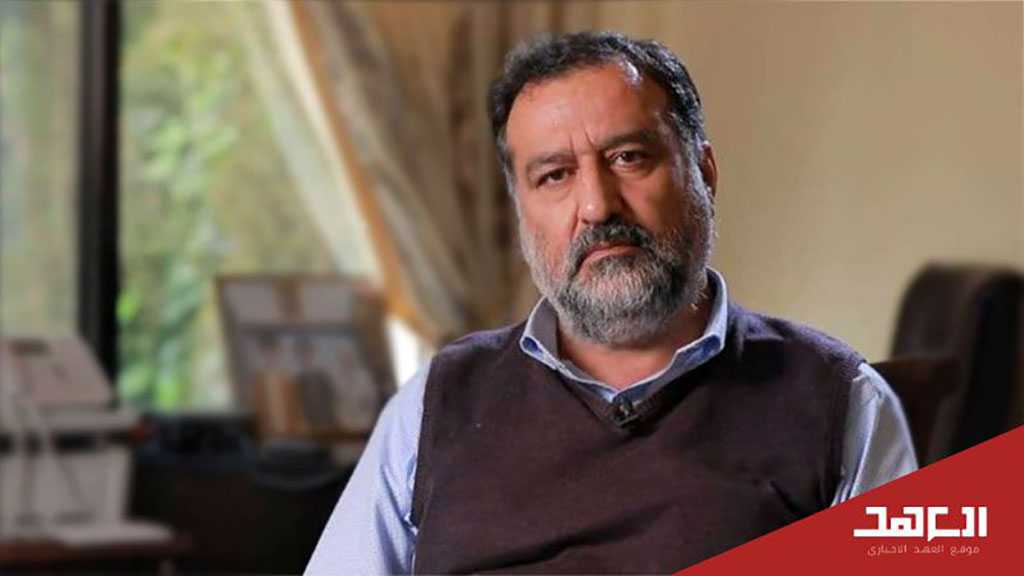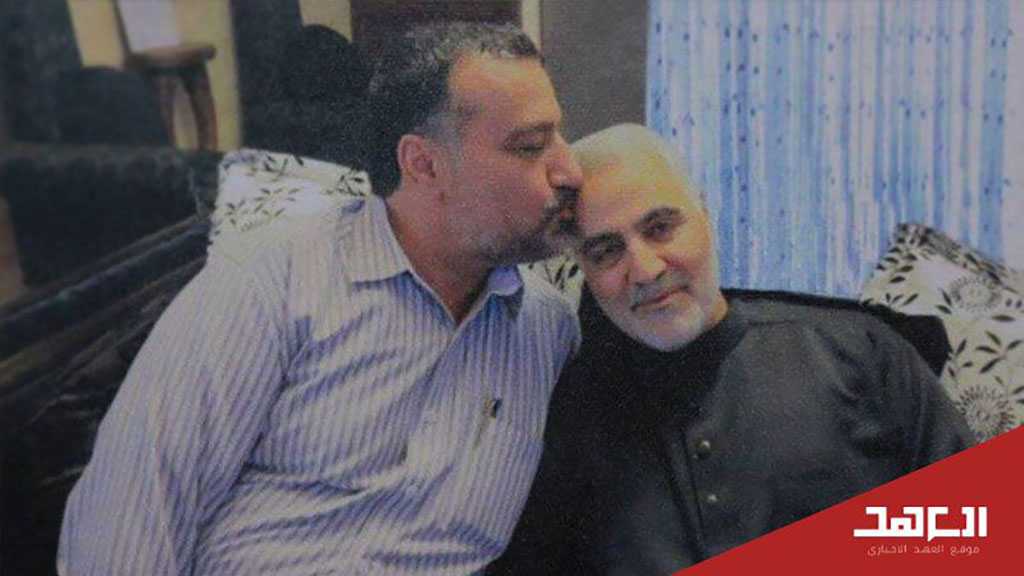
Martyr Soleimani and The Empowerment of Palestinian Resistance: Testimonies that Can’t Be Withheld

Ali Abadi
The fourth anniversary of the martyrdom of Lieutenant General Qassem Soleimani comes amid the “Israeli” aggression on the Gaza Strip and the era of the Al-Aqsa Flood.
As such, this year the occasion throws the spotlight on the late General’s tireless efforts to equip the Palestinian resistance and enhance its military performance. He did this in cooperation with other leaders of the Axis of Resistance. Today, these efforts are embodied in the unparalleled resistance against unprecedented brutality and aggression.
The Islamic Republic of Iran has played a prominent role in developing the capabilities of the Palestinian resistance on all levels, especially in arms deliveries, training, passing on combat expertise, and financing. This approach is based on Iran’s ideological vision of supporting the struggle of the Palestinian people against the Zionist usurpers.
This effort was initiated in the early 1990s after the Madrid Conference, which was organized by the Americans to end the Arab-Zionist conflict and cement “Israel’s” existence.
The effort was intensified after Major General Soleimani was appointed commander of the Quds Force in the Islamic Revolutionary Guard Corps in 1998. He made frequent visits to Syria and Lebanon and resided in the region for long periods of time. This gave great impetus to the resistance in Lebanon and Palestine, which benefited from the existing ties between the two arenas.
In the following years, Soleimani and martyred commander Imad Mughniyeh formed a close-knit duo to enhance the capabilities of the resistance in Palestine, without making a distinction between different factions.
Soleimani benefited from Mughniyeh’s relations with the Palestinian resistance and his battlefield experience so he opened up to all factions that decided to engage in resistance work. This included non-Islamic factions, in addition to the Fatah movement, whose fighters called themselves the Al-Aqsa Martyrs Brigades after the Intifada.
Some of the features of these efforts were strengthened after the liberation of southern Lebanon in May 2000, when the working meetings focused on transferring the spark of victory in Lebanon over to Palestine. This was illustrated by the “Spider’s Web Speech” in which the Secretary-General of Hezbollah addressed the Palestinian people, confirming that they determine their own fate.
Indeed, the Al-Aqsa Intifada in September of the same year put Palestine on the line of comprehensive confrontation with the occupation, and Soleimani played an active role in this stage through successive meetings with the resistance forces.
Arms shipments to the Gaza Strip and the West Bank intensified by land and sea. One of these shipments on board the Karine A ship was intercepted.
The shipments were accompanied by specialized military training courses for Palestinian resistance fighters in Iran and the transfer of expertise for the manufacturing of explosive devices to the occupied interior through educational videos, in addition to other contributions that have not been revealed due to security considerations.
After the liberation of the Gaza Strip in 2005, operations to support the resistance in the Strip were strengthened through several avenues and achieved qualitative leaps in recent years. The Palestinian resistance acquired the capability to produce a large share of weapons and ammunition, which contributed greatly to their self-sufficiency in some areas and overcoming efforts by the enemy and its allies to block the path to resistance.
The underground tunnels built by the Palestinian resistance in the Gaza Strip represent one of the most prominent wonders of resistance in Gaza. There is no doubt that these tunnels deserve to be studied. Stories must be written about how they were created, hidden from the eyes of the enemy for a long time, used during combat, and used to strike the “Israeli” army during the Al-Aqsa Flood operation and its ground attack on the Gaza Strip.
We know little about this wonder, which has become legendary to both friends and foes. That said, many Palestinian resistance leaders spoke on several occasions before the Flood about the origins of the idea behind building tunnels.
The representative of the Hamas movement in Lebanon, Ahmed Abdel Hadi, explained in a symposium at the Institute of International Studies in Beirut on January 8, 2020, a few days after the assassination of General Soleimani, that “the idea of the tunnels came from two people: martyr Commander Imad Mughniyeh and martyr Hajj Qassem Soleimani.” He added that Soleimani “went to Gaza more than once and was a contributor and participant in the defense plan that was drawn up during the last stage.”
Meanwhile, Mansour Haqiqatpour, former assistant to General Soleimani, said in an exclusive interview with Al Jazeera Net that the Resistance Axis planned with Palestinian factions to build more than 400 kilometers of tunnels under a patch of land no bigger than 40 square kilometers. He stressed that there is no fear for the Gaza tunnels because those who supervised their design took various scenarios into consideration, including “flooding the tunnels with water, pumping toxic gas into them, or blowing up certain parts.” He expressed his belief that the enemy was "incapable of completely submerging it with water because it was built in parts and not a unified network."
Multiple testimonies confirm that Soleimani, as the commander of the Quds Force, which coordinates with the Palestinian resistance factions, played a major role in equipping and strengthening the armed resistance’s capabilities. The head of the Hamas movement in the Gaza Strip, Yahya Al-Sinwar, revealed in a press conference on August 28, 2017 that Iran “is the largest provider of weapons, money, and training for the Al-Qassam Brigades.”
He described Iranian military support for Hamas and the Al-Qassam Brigades as “strategic” and that the Palestinian resistance “is building up and developing its military strength, which has doubled, for the liberation of Palestine and the return [of refugees].”
In another interview on January 9, 2020, Al-Sinwar praised the role of Iran and Soleimani in building the military capabilities of the resistance starting from the 1990s. He noted that the support provided by the Islamic Republic is “ideological and principled [...] and stems from great love for Palestine and its people.
He added that “even at the height of their sanctions and crisis, their support did not stop. For example, in 2015, they provided tens of millions of dollars for military industrialization.” This is confirmation that unlimited Iranian support is based on principled conviction and not on a circumstantial self-interested vision - a narrative constantly promoted through propaganda.
The missile capabilities of the resistance developed rapidly from short-range missiles capable of bombing settlements near Gaza to missiles that can reach Tel Aviv, Al-Quds, and beyond. This allowed for a balance of terror to be found in the face of the Zionist attacks on the Gaza Strip.
It is evident from several testimonies that the capabilities that Gaza has achieved in this regard are due in large part to the great efforts of martyr Soleimani, who worked with his team and with the rest of the parties of the Axis of Resistance to deliver these weapons and the expertise to manufacture them to Palestine.
The Secretary-General of the Islamic Jihad Movement, Ziyad al-Nakhalah, said during a memorial ceremony in the Iranian capital, Tehran, on the occasion of the second anniversary of the martyrdom of the Quds Force commander, that “he [martyr Soleimani] personally supervised the delivery of the missiles that struck the Zionist entity and Tel Aviv for the first time to the resistance in Palestine.”
"I bear witness before God, history, and the nation on the anniversary of his passing that he was the first Palestinian and the first Islamist who was concerned about Palestine and Al-Quds," Al-Nakhalah added.
In the successive wars that the Gaza Strip witnessed, the Resistance Axis in the region was eager to advance the level of coordination with the resistance in Gaza. The aim was to assess the battlefield situation and provide intelligence to its leadership for managing the battles. During the Al-Quds Sword war in May 2021, the military leader of the Al-Qassam Brigades, Muhammad Al-Sinwar, the brother of Commander Yahya Al-Sinwar, revealed that “a joint security room with the Axis of Resistance, which included intelligence officers from Al-Qassam, Hezbollah, and the Revolutionary Guard, was in constant session throughout the war” and that the joint security room “made important intelligence contributions during the battle.”
Based on the above, it is clear that martyr Soleimani was not confined to specific aspects when supporting the resistance in Palestine but rather worked with the resistance forces in the region at various levels with the aim of bringing them to a level that would enable them to achieve victory in any confrontation with the enemy.
This is how the Axis of Resistance overcame all obstacles and gaps to pave the way for Al-Quds. Perhaps one of the most prominent characteristics of martyr Soleimani, which is no longer a secret, is that he was a man of high spirits and a man of action and determination who took to the battlefield, moved among the fighters, and communicated with senior officials while empowering the resistance and achieving victory against the enemy.
Comments


